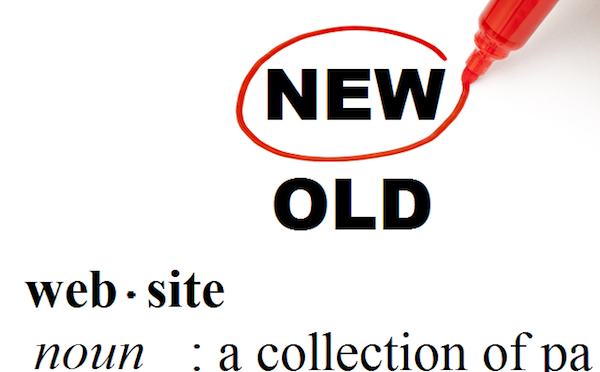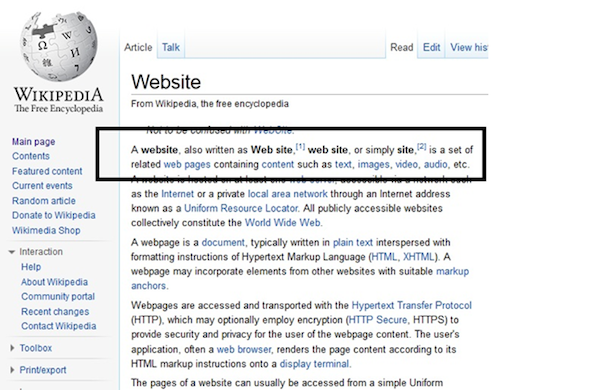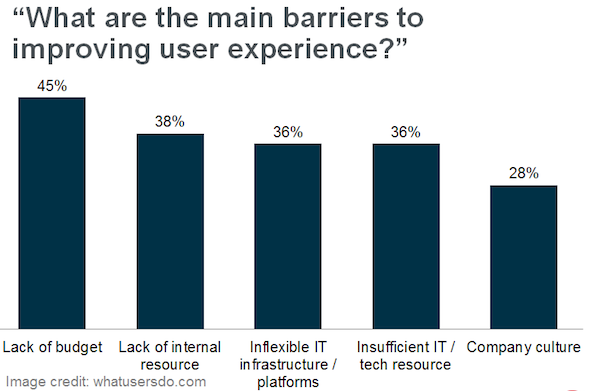
For years, the website has been defined as a computer term representing pages on the World Wide Web. This outdated perception is holding brands back from embracing the website for what it really is.

The Definition of a Website Must be Updated
Out With The Old
Unfortunately, the current outdated definition of a website has perpetuated the view of a website as an exercise in technology, rather than a function of business.
Merriam-Webster currently defines the website as “a group of World Wide Web pages usually containing hyperlinks to each other and made available online by an individual, company, educational institution, government, or organization.”
Here’s how Wikipedia defines it: “A website is hosted on at least one web server, accessible via a network such as the Internet or a private local area network through an Internet address known as a Uniform Resource Locator.

Isn’t the website more than a mere set of related web pages? Doesn’t it have to be more, if it will serve any meaningful purpose?
In With The New
In my book I propose a new definition for the website, as:
A digital environment capable of delivering information and solutions and promoting interaction between people, places, and things to support the goals of the organization it was created for.
The Website Process is Broken
In light of the way the website has been defined over the years, it isn’t too difficult to understand why in 2013 those responsible for building websites continue to view the website in the same as they did in the 1990s; as a project.
The Gauntlet of Project-dom
A project has a beginning and an end. There is a time when the project is deemed “complete”. This flies in the face of what a website is, or at least it should be. In today’s ever-changing digital landscape, a website is never “done.” Ever!
Website designers, developers, webmasters, and marketers perpetuate the website as a project. For them, the website is a deliverable that quantifies a finite, measurable accomplishment. Because these are the professionals responsible for a large part of the website discussion, this perspective has become adopted by their clients: the business or brand that will depend upon the website to achieve goals.
This approach has perpetuated the perception of the website as a static project, rather than a living, breathing extension of the business or brand.
As a result, the website budget is defined to creation, and few, if any organizations allocate resources to manage the website as a business asset, equally as vital to the operation as the physical store-front, office building, equipment, etc.
Not surprisingly, the myopic view of the website as a project, rather than a living extension of the business focused on serving users, has resulted in the creation of many mediocre and non-performing environments.
This could account for why a high percentage of brands revealed in a survey by WhatUsersDo.com that, despite 78 percent being extremely or “quite” to delivering the best user experience, 60 percent rate their brand’s website as average, or below average.
What the Website Should Be
A successful website is a nimble environment, responsive to industry developments, emerging trends, behavior of competitors, as well as meeting and exceeding customer expectations. A static environment, essentially a brochure, is simply not enough to serve the sustainable brand in today’s marketplace.
Once and for all: the website is not a project.
So, When Does the Life of The Website Begin?
Perspective defines the life of a website.
For those who manage the website as a project (designers, developers, SEO professionals, content writers), the life of the website begins when the project is approved, the schedule is built, and a budget is agreed upon. It’s important to note that these players also view the project (website) as “done” when they deliver it.
The problem with this thinking: it flies in the face of what the website means to the business.
For the brand, the website is an expense until the website goes live. Then, and only then, will the website be considered an asset. By the time the business is looking to the website to deliver results, the website designers, developers, SEO professionals, etc. have already moved on to their next project.
This is why it’s imperative that the brand own the website, from strategic planning, to design, optimization, post-live analysis, and ongoing management. Doing so not only improves communication, but also reduces costs and improves performance and ROI.
The Website Process Should Never Begin With Design
Design is fun and creative. And nine times out of 10, most brands begin the process to build a website with adesign, whether it’s new or a redesign. Rushing into design without a strategic plan is one of the reasons so many websites fail to meet the expectations or deliver ROI.
Think about it. Design is solving problems. If you haven’t defined the problems, you can’t possibly expect the design to present meaningful solutions.
Help the designer by first preparing a plan and site map. You can get started by asking key questions:
- Who are your target audiences?
- What information do you wish to provide?
- How can you present it so they may convert themselves to customers?
These questions will naturally lead into discussion around requirements for application integration, SEO, video, social media, etc. The more prepared you are, the closer the website design, and every other aspect of the website will be to supporting the goals of the brand, and serving its audiences, saving a great deal of time, money, and frustration.
Are Customers Satisfied?
This is one of the most important questions when determining the success of a brand for a business operating in a competitive industry.
The website fails to deliver ROI when it doesn’t attract new audiences, deliver a quality user experience, and convert visitors to customers. In other words, if the customer isn’t satisfied, the website has failed.
Many organizations find themselves having to guess or read between the lines in website analytics reports to determine customer satisfaction. There are many tools and services available to capture feedback from visitors.
Google offers a website survey product called Google Consumer Survey. The survey’s default questions are free, but customization will result in charges.
Despite acknowledging the importance of user experience, a surprising number of brands will fail to improve the user experience, regardless of what a website user survey may tell them.

The Website as a Business Asset
The bottom line is the bottom line. What good is a website that you invest $10,000, $100,000 or $1 million in if it won’t support the immediate and long-term goals of the business?
The website isn’t a communication, technological fete, or expression of creativity. It can be these things, but it must first and foremost serve the mission and objectives of the organization it was built to support.
Where Does Responsibility For the Website Lie?
The responsibility for the website is that of the business or brand. Website designers, developers, and programmers will admit that they would much prefer to be provided with clear direction, rather than to try to read the minds of their client.
Only after the website has been properly planned, with clearly stated goals, a sitemap, visitor personas, a specific strategy to differentiate from competitors and paths to conversion…by the brand, should website design, programming, SEO, video and content be initiated.
Should the Website be Redefined?
So, have I made the case? Should the website be redefined? And, are brands ready to embrace the website as an extension of the business, rather than a project?



